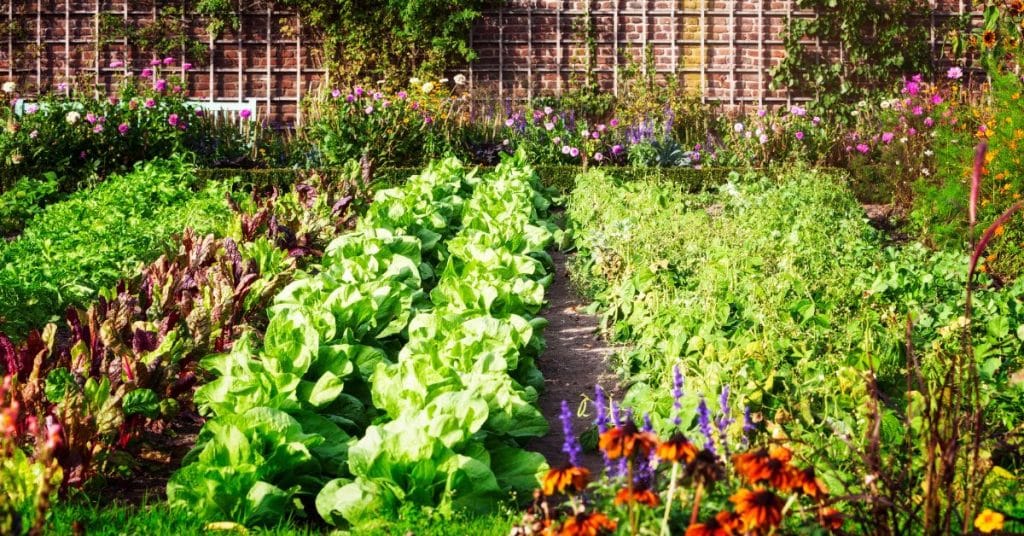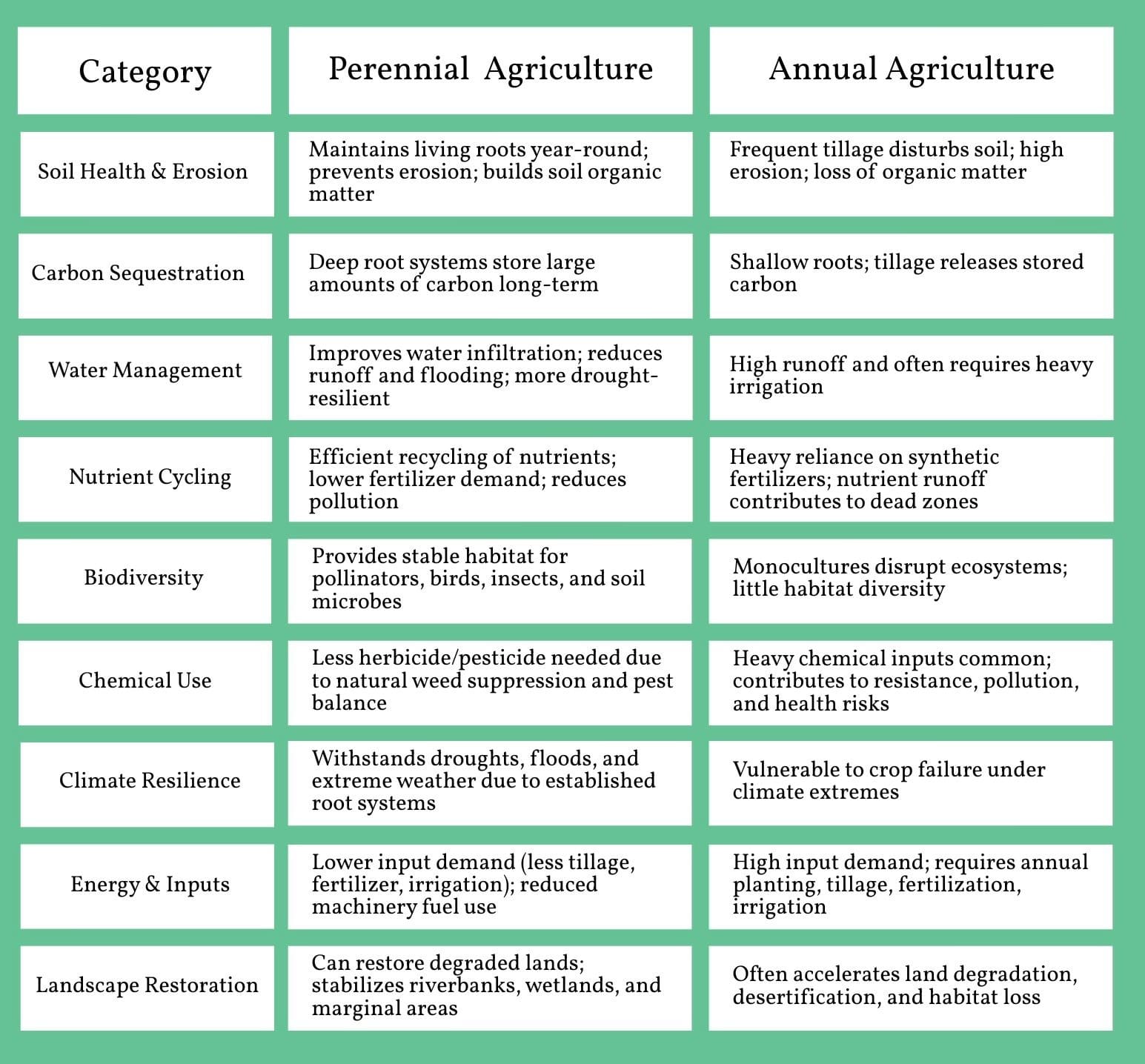

For much of modern history, agriculture has relied on annual crops like corn, soy, and wheat. These crops dominate farmland and anchor global markets, but their short lifespans come at a steep ecological cost. In the conventional agriculture systems that dominate today, annual fields must be plowed, seeded, fertilized, and sprayed every year, creating constant cycles of soil disturbance, chemical use, and high input demand. This model fuels erosion, depletes groundwater, pollutes rivers and oceans, drives greenhouse gas emissions, and reduces biodiversity by turning landscapes into monocultures vulnerable to pests, disease, and climate extremes.
Perennial agriculture offers a different path. Unlike annuals, perennial crops establish deep, long-lived root systems that remain in place year after year. This simple shift creates cascading ecological benefits:
At scale, perennial-based agriculture can restore degraded lands, rebuild soils, slow desertification, and reestablish natural buffers along rivers and wetlands. In this way, perennial agriculture not only produces food but regenerates the ecosystems it depends on.
Perennializing agriculture is not just a theory. It is already happening around the world. For decades, researchers and farmers have been experimenting with ways to make food production more ecologically aligned, and many of those experiments have now matured into real commercial systems. What began as small pilot projects and niche research plots have grown into viable supply chains, with perennial crops entering mainstream markets, from cereals and baked goods to coffee, nuts, and tropical fruits. In some cases, these crops are traditional staples being revitalized with more sustainable management; in others, they represent innovation, such as perennial grains and rice varieties developed through modern breeding programs. Together, they demonstrate that perennial farming is not a distant aspiration but a present reality with tangible economic and environmental benefits.
Perennial grains include Kernza, a trademarked form of intermediate wheatgrass developed by The Land Institute and grown commercially in North America and Europe. It is used in cereals, baked goods, and beer, and its deep roots improve soil health and carbon storage compared to annual wheat. Similarly, perennial rice developed by The Land Institute and the Yunnan Academy of Agricultural Sciences feeds thousands of farmers in Southeast Asia. Unlike traditional rice, it regrows for multiple years, cutting tillage, labor, and fertilizer needs.
Perennial agriculture also aligns with agroforestry and orchard systems. For example, chestnut and hazelnut orchards are gaining momentum in the United States and Europe, with hazelnuts being scaled by major companies and chestnuts entering new markets as versatile staples. Tropical shade-grown coffee and cacao systems likewise integrate perennial staples such as breadfruit and other canopy species, conserving biodiversity and reducing reliance on chemicals. Vineyards, orchards, and berry systems, such as those for blueberries and raspberries, can similarly reduce soil disturbance, enhance biodiversity, and maintain perennial root systems that protect soil while delivering high yields.
You don’t need acres of farmland to be part of the shift toward more resilient food systems. By choosing long-lived plants instead of short-season crops, you can turn your backyard, patio, or community plot into thriving perennial landscapes that provide food year after year.
Perennial vegetables and herbs include asparagus, rhubarb, jerusalem artichokes, sea kale, tree collards, good-king-henry, groundnuts, chayote, chinese artichokes, skirret, chives, walking onions, rosemary, and oregano. A standout in many garden plans are the tree collards, with some varieties growing over ten feet tall and providing delicious collards year after year!
Perennial agriculture provides a foundation for farming systems that align with ecological limits. By protecting soil, sequestering carbon, conserving water, cycling nutrients, and supporting biodiversity, perennials offer a pathway toward food production that restores rather than depletes. Already, examples from Kernza to perennial rice demonstrate the viability of these systems at scale. At the same time, home gardeners can contribute by planting perennials in their own landscapes.
The transition away from extractive annual monocultures toward perennial systems represents one of the most promising opportunities for building resilient food systems that sustain both people and the planet.

Copyright 2025 Center for Nutrition Studies. All rights reserved.